Ever wondered how hard acacia wood truly is? Let’s delve into the surprising factors that determine its hardness and why it matters to you. Ready to uncover its secrets?
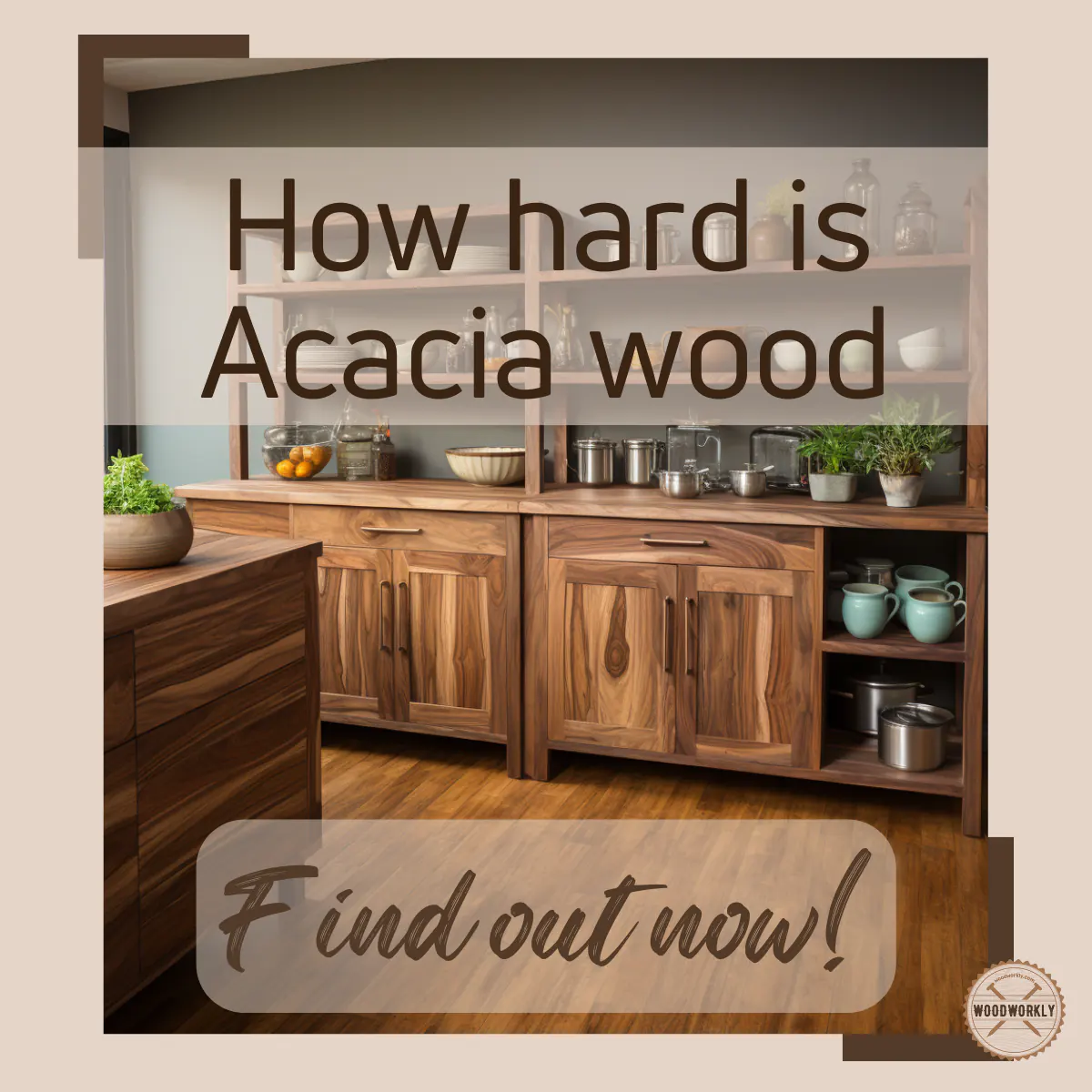
Acacia wood is commonly used for furniture making, wood carving, and construction purposes.
It is known as one of the strongest woods on the planet.
Because of its beautiful grain, Acacia wood is popular for decorative purposes as well.
When I first started to work with this awesome wood, I was always curious about its hardness factor.
So, I looked into it with the help of the experts, and here’s what I discovered, How hard is Acacia wood?
Acacia wood is a hardwood with a Janka hardness rating between 1170 and 2345, similar to red oak. Factors like species, age, growing conditions, and cutting season influence its hardness. Although it’s denser and more challenging to work with, its hardness grants it excellent durability.
But that’s a quick snapshot.

In this article I’ll deeply talk about how hard is Acacia wood, is Acacia wood hardwood or softwood by considering its characteristics.
Furthermore, I’ll discuss the uses of Acacia wood in terms of its hardness and how strong it is.
Finally, I’ll answer frequently asked questions as well.
So, just keep reading!
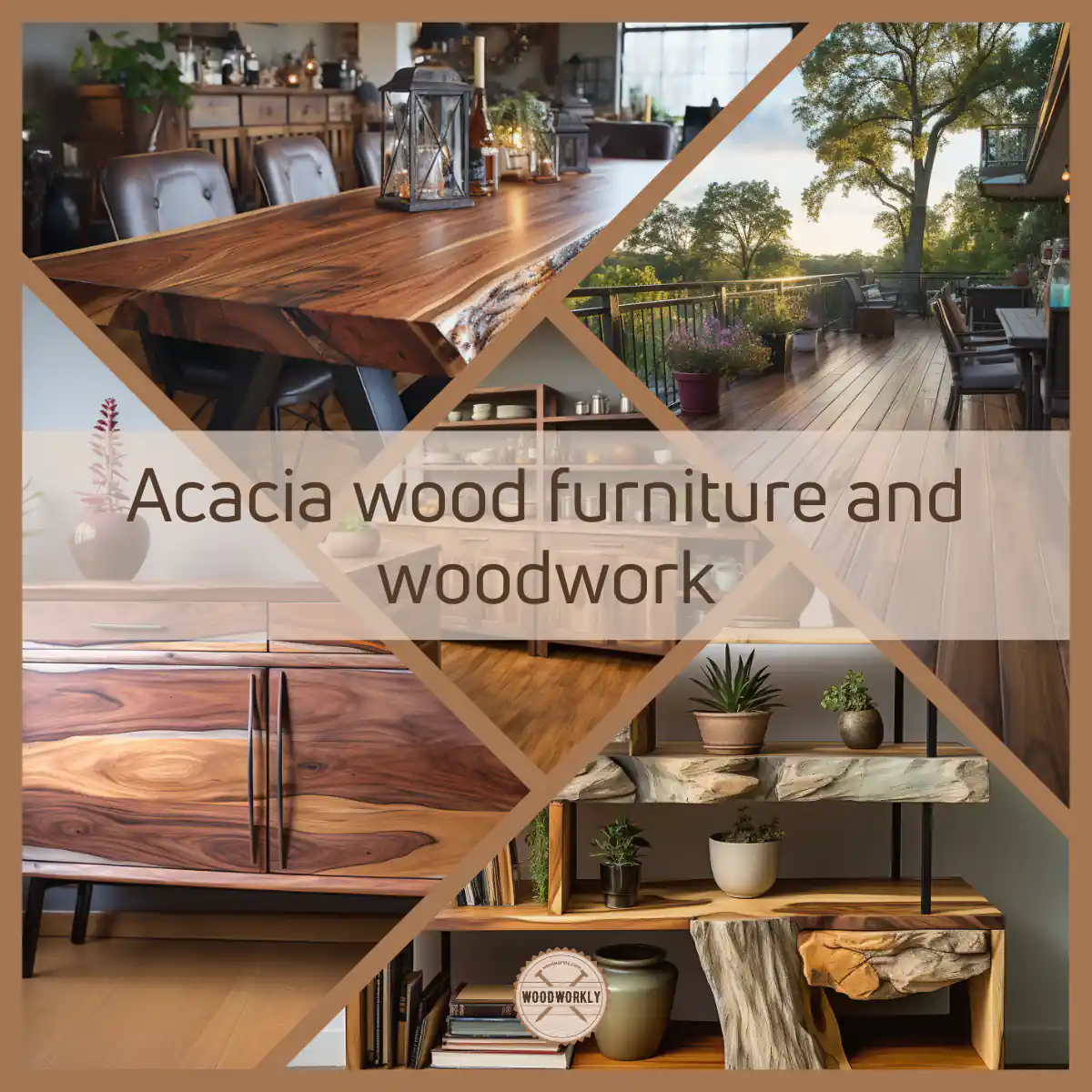
First of all, let’s get a quick look at what is acacia wood.
What is Acacia Wood?
Acacia wood is a type of hardwood derived from the Acacia genus of trees and shrubs, which consists of more than a thousand different species.
These trees are native to various parts of the world, including Australia, Africa, North America, and Asia, each with unique climates that play a role in determining the properties of the acacia wood they produce.
Appearance of Acacia Wood
Acacia trees are notable for their attractive, exotic appearance.
They are often characterized by their gnarly branches and delicate, fern-like leaves.
Depending on the species, the acacia tree can produce blossoms that vary in color from bright yellow to subtle creams, enhancing their natural beauty.
The wood from acacia trees is known for its strength, durability, and unique grain patterns.
It displays a broad range of colors, from a light, golden hue to a rich, dark brown, often accompanied by an attractive natural sheen.
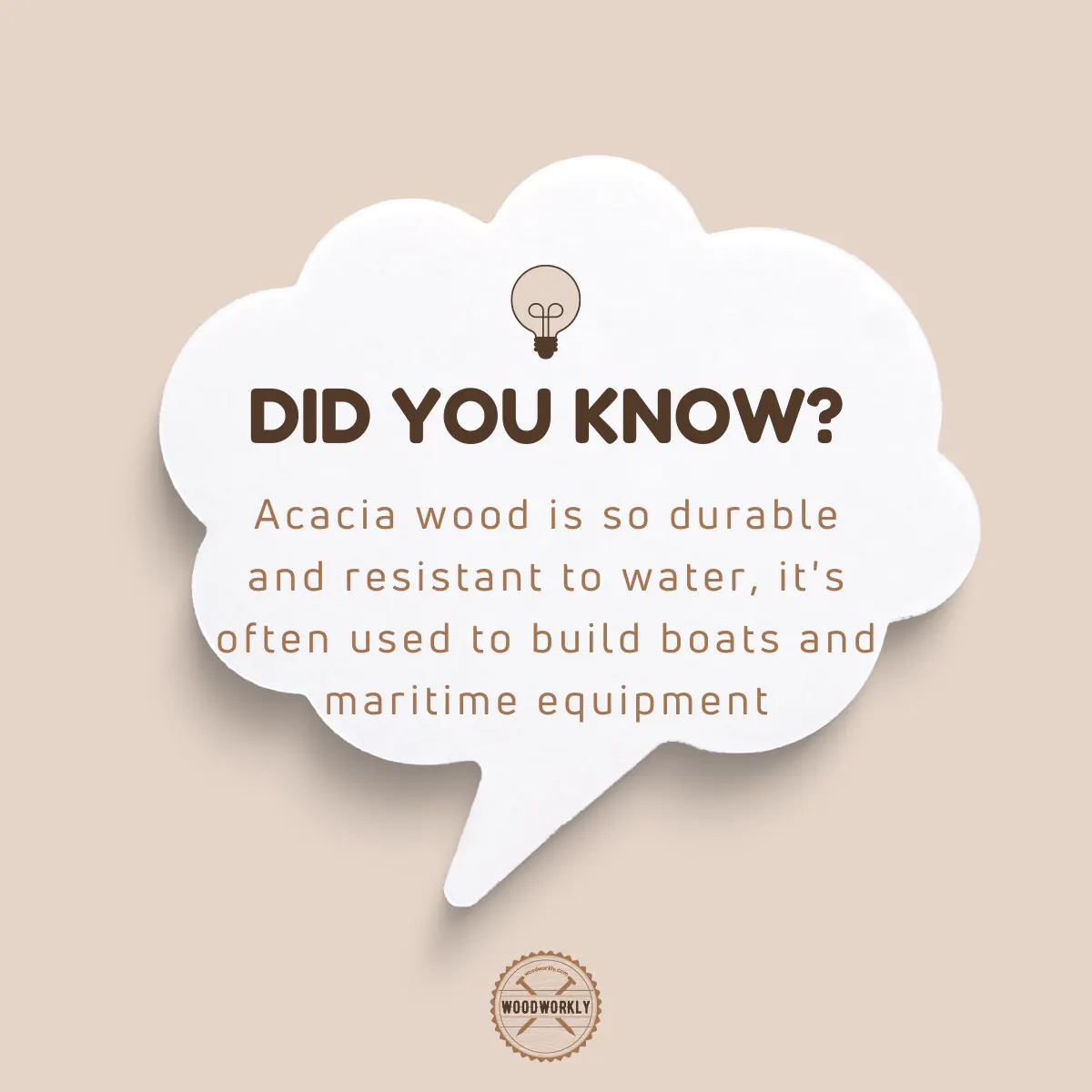
Sustainability and Acacia Wood
With the growing awareness around the importance of sustainability, acacia wood has become increasingly popular.
Many species of acacia trees grow quickly, maturing within five to seven years, making them a more sustainable choice compared to other hardwood trees that take decades to reach full maturity.
In summary, acacia wood is a versatile, attractive, and sustainable option that serves a myriad of uses, particularly in furniture making.
Its inherent durability, coupled with its unique aesthetics and sustainable growth, make it a popular choice for homeowners and designers alike.
It’s an excellent option if you’re seeking to combine style, function, and sustainability in your space.
Now you have a proper understanding of acacia wood. So, let’s start the discussion about its hardness.
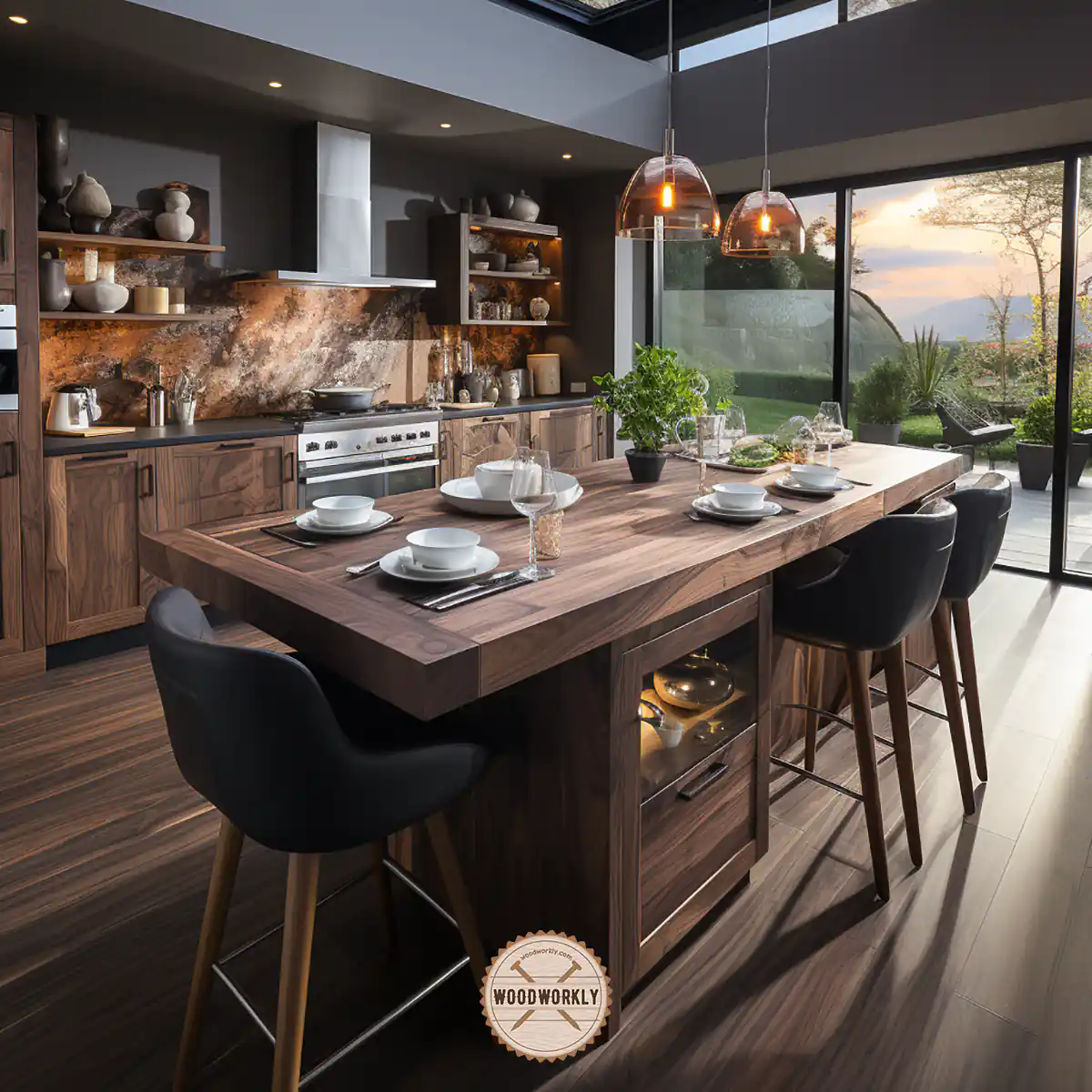
Is Acacia Wood Hardwood?
Yes, Acacia wood is hardwood. It is incredibly strong and durable with a higher hardness rating of 2,300 lbf (10,230 N).
Acacia wood is harder than most other woods. When we look at the structural properties of Acacia wood, it has a less porous structure than most other woods.
This is why Acacia has high density as well as high hardness value. Because of having a less porous structure, the number of fiber per unit area is high and that increases its density.
Because of being hardwood with outstanding hardness, Acacia is used to making cutting boards that can easily withstand knife edges.
The straight or wavy wood grain of Acacia wood increases its hardness and strength.
So, let’s have a look at the hardness scale of Acacia wood according to the Janka hardness value.
Tip: Janka hardness test is the best measure measurement to identify the hardness of a particular wood. it measures the resistance of wood to dent and wear.
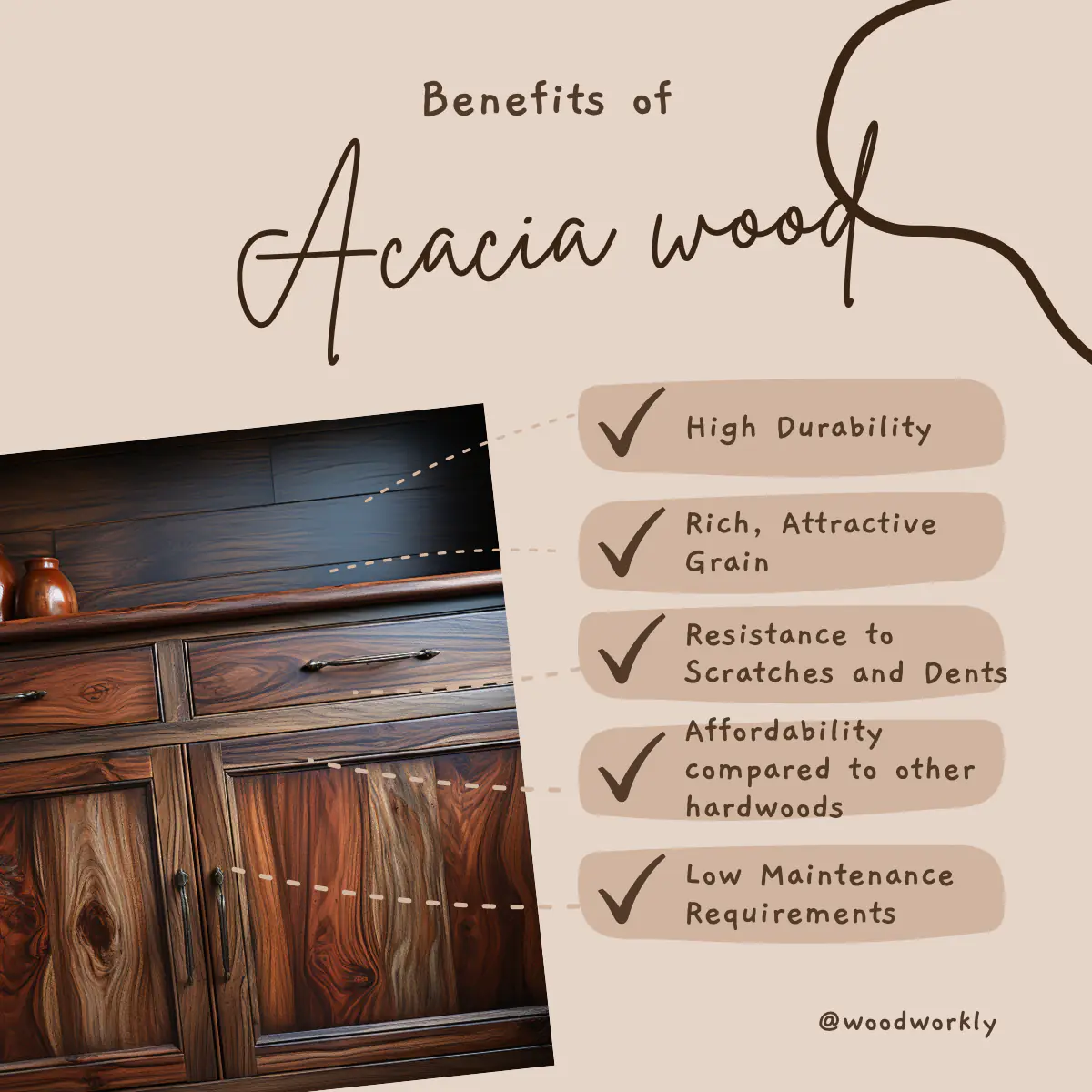
Maple Wood Hardness Comparision
Acacia wood has a hardness rating of 2,300 lbf (10,230 N).
Hereby I have listed the hardness of popular woods according to the Janka hardness test to get an idea about how hard Acacia wood is.
| Wood species | Hardness value |
| Brazilian Walnut | 3,684 lbf (16,390 N) |
| Red Mahogany, Turpentine | 2,697 lbf (12,000 N) |
| Brazilian Cherry, Jatoba | 2,350 lbf (10,500 N) |
| Golden Teak | 2,330 lbf (10,400 N) |
| Acacia wood | 2,300 lbf (10,230 N) |
| Hickory, Pecan, Satinwood | 1,820 lbf (8,100 N) |
| Rosewood | 1,780 lbf (7,900 N) |
| African Padauk | 1,725 lbf (7,670 N) |
| Wenge, Red Pine, Hornbeam | 1,630 lbf (7,300 N) |
| Hard Maple, Sugar Maple | 1,450 lbf (6,400 N) |
| Australian Cypress | 1,375 lbf (6,120 N) |
| White Oak | 1,360 lbf (6,000 N) |
| Ash (White) | 1,320 lbf (5,900 N) |
| American Beech | 1,300 lbf (5,800 N) |
| Red Oak (Northern) | 1,290 lbf (5,700 N) |
| Yellow Birch / Baltic birch | 1,260 lbf (5,600 N) |
| Heart pine | 1,225 lbf (5,450 N) |
| Teak | 1,155 lbf (5,140 N) |
| Black Walnut, North American Walnut | 1,010 lbf (4,500 N) |
| Cherry | 995 lbf (4,430 N) |
| Black Cherry, Imbuia | 950 lbf (4,200 N) |
| Red Maple | 950 lbf (4,200 N) |
| Silver Maple | 700 lbf (3,100 N) |
| Southern Yellow Pine (Loblolly and Shortleaf) | 690 lbf (3,100 N) |
| Douglas Fir | 660 lbf (2,900 N) |
As you can see Acacia wood is one of the hardest woods.
Acacia wood is 23% harder than Hickory, 55% harder than white Oak.
The density of Acacia wood is 760 kgm-3 which is also pretty much higher than any softwood and most hardwoods as well.
So, let’s have a look at the characteristics of Acacia wood to get a clear idea about its hardness and strength.
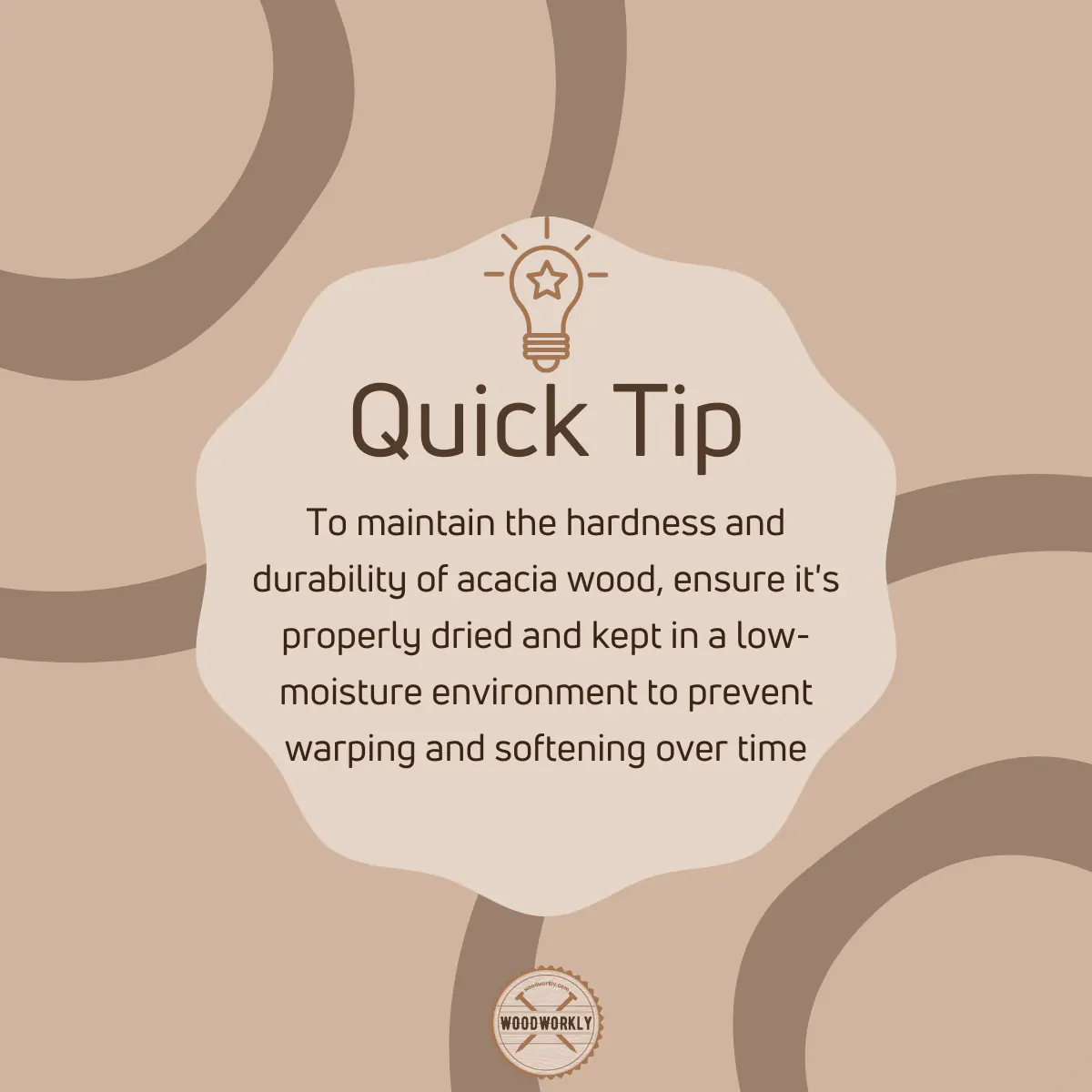
Acacia Wood Characteristics
| Color | Medium to dark brown color |
| Density | 760 kgm-3 |
| Hardness | 2,300 lbf (10,230 N) |
| Stiffness | 1,476 ksi |
| Applications | Indoor and outdoor furniture, flooring, constructions |
Acacia wood has a medium to dark brown color range which turns into a reddish tone over time. Woodgrain is straight or wavy.
Strength and Durability
Acacia wood is renowned for its impressive strength and durability.
Falling within the range of 1170 to 2345 on the Janka hardness scale, it’s significantly harder than many other types of hardwood, such as pine.
This durability allows acacia-made furniture to withstand the rigors of daily use and last for many years with proper care.
Unique Aesthetics
Acacia wood comes in a variety of shades, from light golden hues to rich, dark browns, often accentuated by an appealing natural shine.
Its grain patterns are usually straight but can also be wavy or interlocked, creating unique, eye-catching designs that add character to any piece made from it.
Resilience to Weathering
Acacia wood possesses a natural resistance to the weathering process.
This means that over time, even when exposed to elements like water and sunlight, it retains its hardness and structural integrity.
This resilience makes acacia wood a great option for outdoor furniture.
Resistance to Moisture and Pests
Acacia wood has a natural resistance to water, making it less prone to warping or swelling when exposed to moisture.
This characteristic also makes it resistant to many kinds of insects and pests, adding to its longevity.
Workability
Despite its hardness, acacia wood is generally easy to work with.
It can be cut, sanded, and finished beautifully, making it a favorite among carpenters and woodworkers.
Sustainability
Many acacia species are fast-growing trees, reaching maturity within a relatively short span of 5-7 years, making it a more sustainable option compared to other hardwoods that take much longer to mature.
From being used to build sturdy furniture to crafting intricate decor pieces, acacia wood’s many characteristics lend themselves to a range of applications.
Here’re some most important qualities of acacia wood,
- Hardwood
- Lightweight
- High durability
- Rot-resistant
- Beautiful wood grain
- Scratch-resistant
- High workability
- Low maintenance
- High sustainability
So, let’s have a look at the uses of Acacia wood to get an idea about the importance of being harder than most other woods.
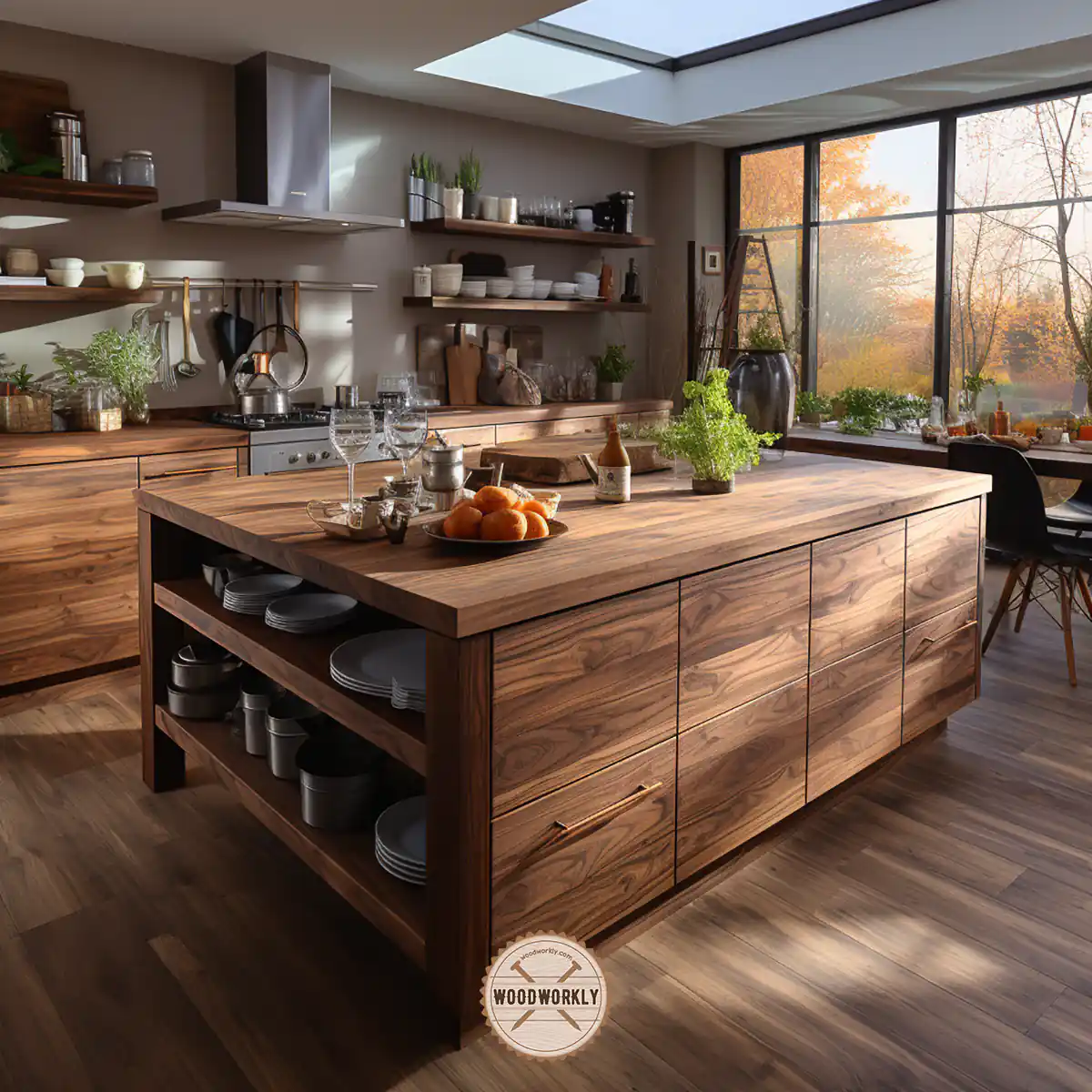
Uses of Acacia Hardwood
Because of having great qualities, Acacia wood is used for almost any kind of woodworking project. Such as,
- Flooring
- Decorative items
- Support beams
- Cabinets
- Kitchen utensils
- Wood carving projects
- Making handicrafts
- Tools and other equipment
- Exterior columns
As you can see, Acacia wood is widely spread in any field without any issue.
It has great hardness, strength, and durability which makes it perfect for any woodworking project.
The water resistivity of Acacia wood is also higher than many other kinds of wood.
Therefore, Acacia wood is popular among woodworkers.
The only drawback of Acacia wood is it does not take stain or paint well and needs to pay more attention when finishing to get the smooth botchy-free surface we need than other woods.
Apart from that Acacia wood is highly recommended for both beginners and experienced woodworkers to get experience with.
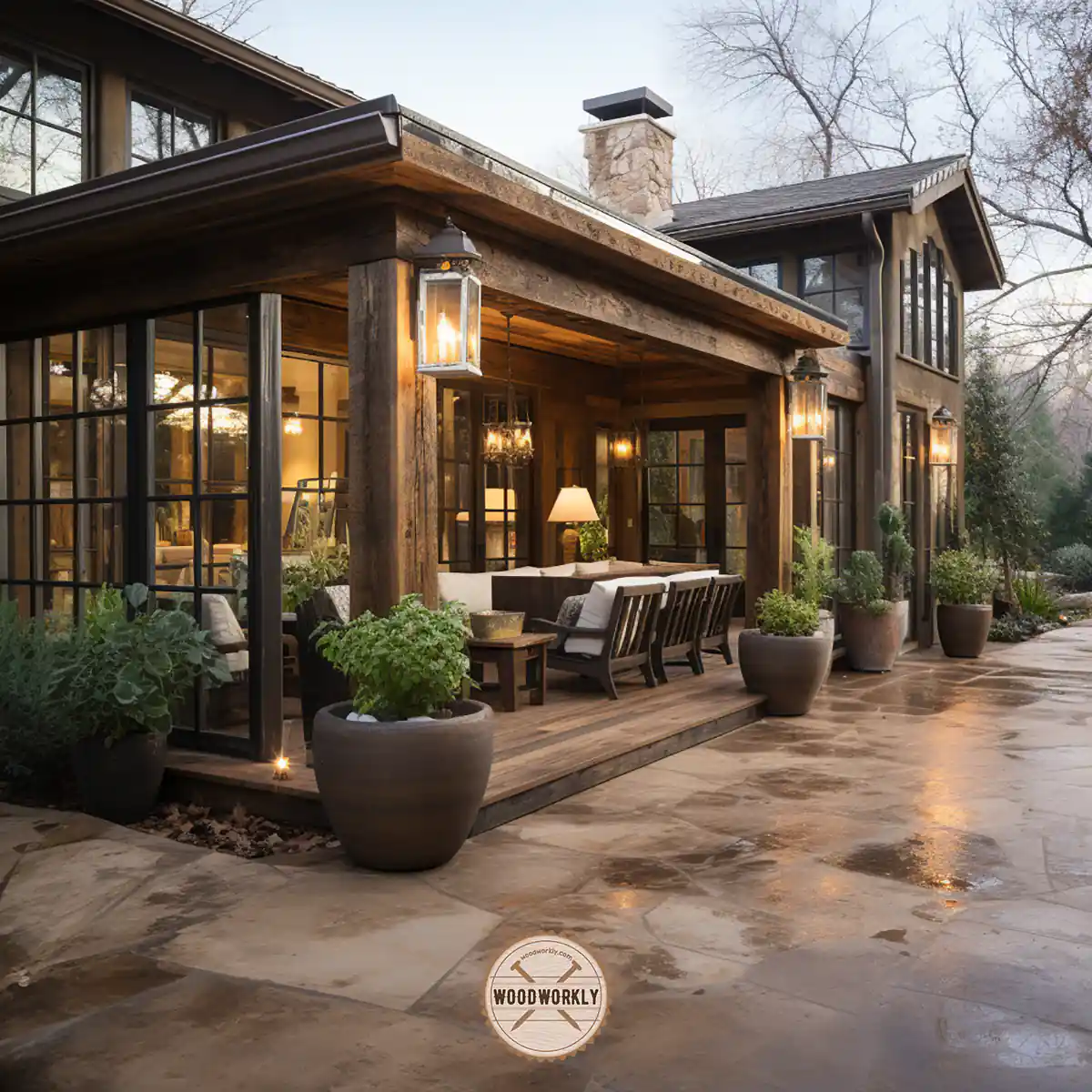
How Strong is Acacia Wood?
Acacia wood is known as one of the strongest wood types on the planet.
In terms of strength, Acacia wood has, Compressive strength of 10,142 psi. and Bending strength of 18,263 psi. which is so much higher than any hardwood we know.
This is the reason for the incredible strength of Acacia wood. because of having high strength Acacia wood is durable and even can use for more than 30 years without applying a single coating.
But I highly recommend you apply proper finishing to get the best results.
The dimensional stability of Acacia wood is also high due to its high strength. Therefore, it is commonly used as support beams to bear and handle any load without losing its stability.
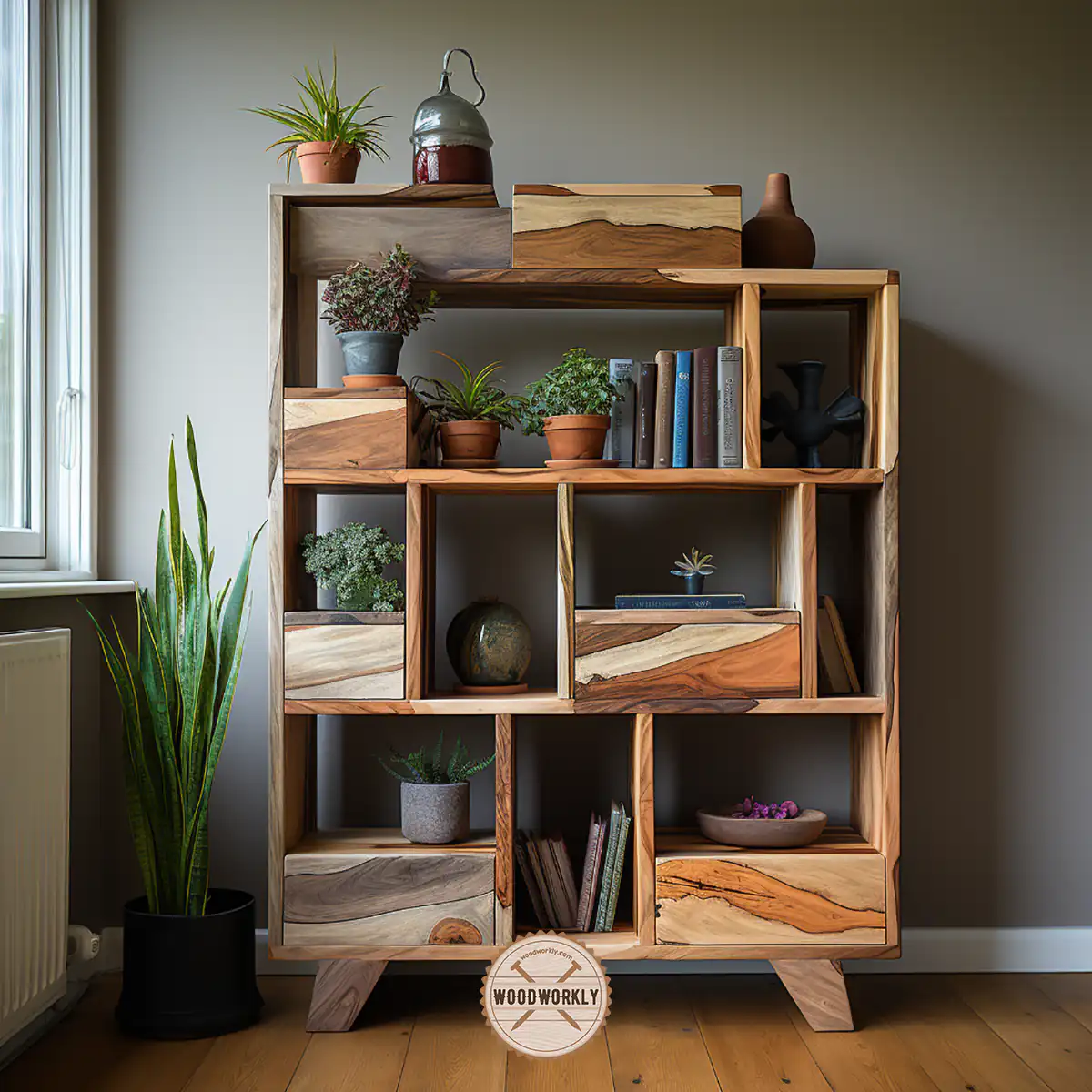
Acacia Wood Flooring
Because of being harder and denser wood with a Janka hardness rating of 2,300 lbf (10,230 N) Acacia wood is a popular selection in flooring.
It has great resistance for dents and scratches and also has good water resistivity which can easily handle foot traffic with very little maintenance.
Acacia wood is beautiful and unique hardwood with nice color variations. Once it ages it turns into reddish color which gives a rich aesthetic look to your floor.
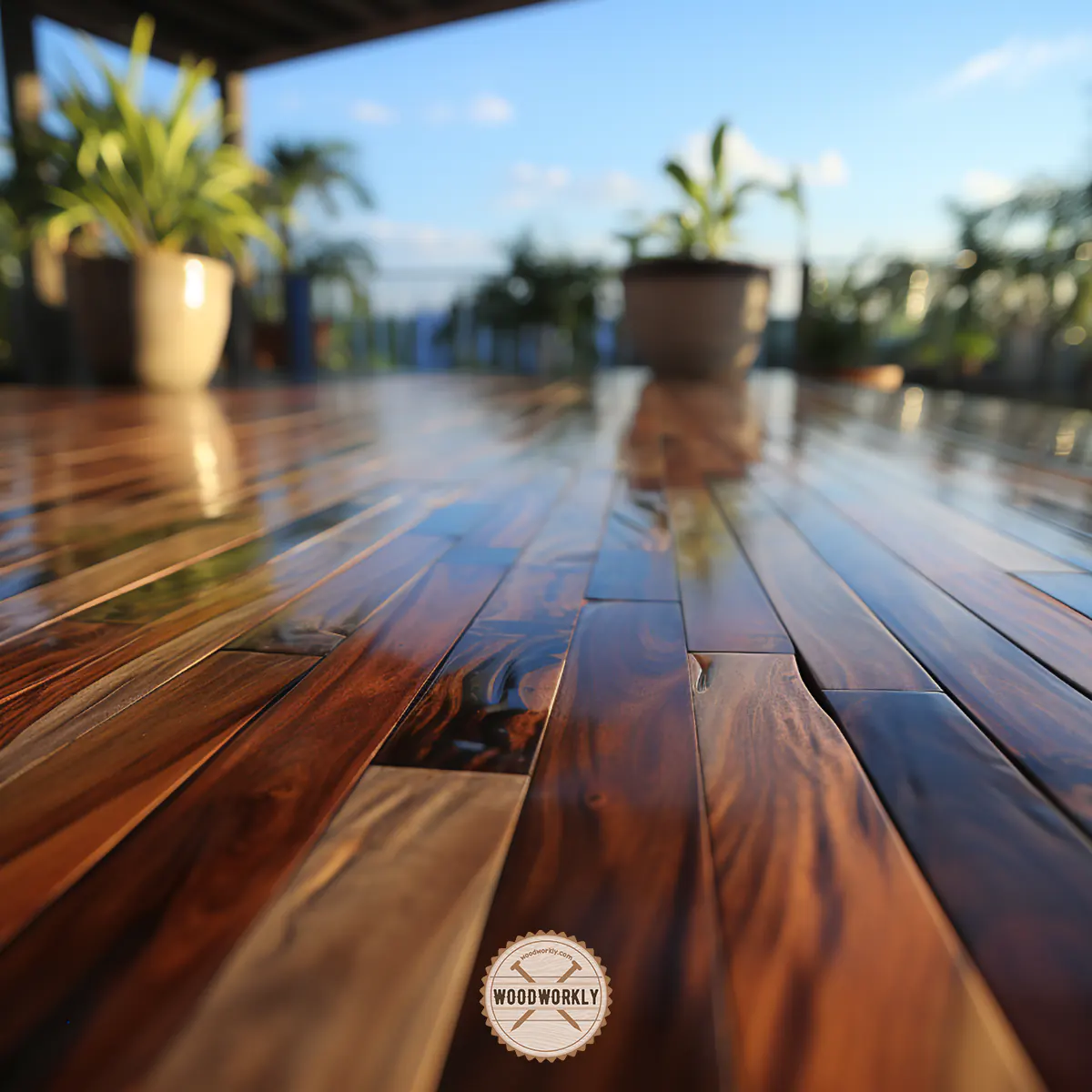
Acacia Wood Flooring Pros and Cons
Here are some of the advantages and disadvantages you’ll take by applying Acacia wood as a hardwood flooring material in terms of its hardness.
| Pros | Cons |
| Hardwood (Harder than many kinds of wood) | Painting and staining is difficult |
| High durability | Expensive |
| Need less maintenance | Irregular wood grain |
| Lightweight | Slow drying time |
| Scratch and dent resistant | Sizes of planks are limited |
| Water-resistant | Buckle under high humidity levels |
| Strong | |
| High workability | |
| Rot-resistant | |
| Weather-resistant |
As you can see, the number of advantages of using Acacia wood as hardwood flooring is always higher than its drawbacks.
This is why it is one of the popular wood when it comes to flooring.
So, let’s compare the hardness of acacia wood with some other popular types of wood.
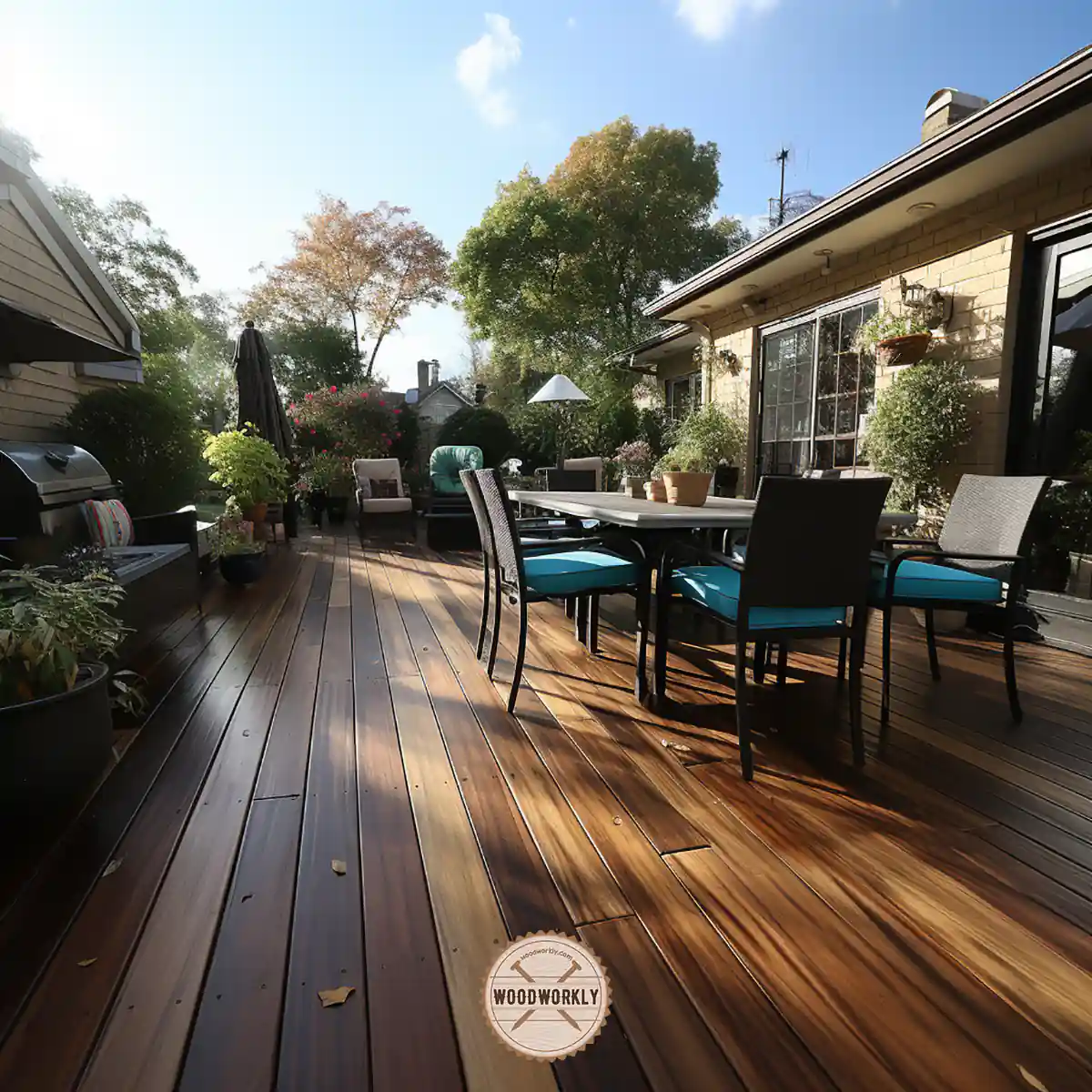
Acacia vs Birch Hardness
If you’re contemplating between acacia and birch for your next furniture purchase or woodwork project, the relative hardness of these two types of wood can be a significant factor.
Let’s explore this topic further.
Hardness of Acacia Wood
As we’ve discussed earlier, acacia wood’s hardness is quite remarkable. It typically ranges from 1170 to 2345 on the Janka hardness scale, making it a considerably hard wood.
This hardness contributes to its durability and resistance to scratches and dents, making it a great choice for high-traffic areas and heavy-duty applications, such as flooring or outdoor furniture.
Hardness of Birch Wood
In contrast, birch wood is generally softer than acacia. The Janka hardness scale rates birch at around 1260, which is at the lower end of the range for acacia.
However, it is still considered a hardwood and is actually slightly harder than renowned hardwoods like red oak.
Birch wood’s moderate hardness makes it quite workable, and it can be shaped into detailed and intricate designs with relative ease.
Comparing Acacia and Birch Hardness
While both acacia and birch are considered hardwoods, acacia is generally harder than birch.
This means acacia wood furniture or flooring will likely stand up better to heavy use and potential damage over time.
However, the relative softness of birch, while still being durable, makes it a bit easier to work with.
As with any decision on materials, your choice between acacia and birch wood should be influenced by more than just hardness.
Consider also factors like aesthetic preference, the specific demands of your project, cost, and the environmental impacts associated with each type of wood.
Remember, the most suitable wood for your needs depends on a balance of these factors rather than any single characteristic.
Each wood type, whether it be acacia or birch, carries its unique blend of advantages.
Acacia’s superior hardness, coupled with its beautiful grain patterns, makes it an attractive choice for enduring pieces.
On the other hand, birch, with its moderate hardness and exceptional workability, offers a high degree of versatility for creative woodworking.
In the end, it’s all about what best suits your needs and preferences.
Acacia Vs Birch Comparison Table
| Characteristics | Acacia Wood | Birch Wood |
|---|---|---|
| Janka Hardness | 1170 to 2345 (Depending on species) | Around 1260 |
| Durability | Highly durable, resistant to scratches and dents | Moderately durable, slightly less hard |
| Workability | More difficult to work due to hardness | Easier to work and shape |
| Grain Pattern | Rich and varied, often interlocking | Straight, even grain |
| Color | Ranges from light brown to dark reddish-brown | Light yellow to medium brown |
| Use in Furniture | Outdoor furniture, flooring | Cabinets, furniture, veneers, paneling |
| Moisture Resistance | Highly resistant due to its natural oils | Moderate resistance |
| Cost | Generally more expensive | Generally less expensive |
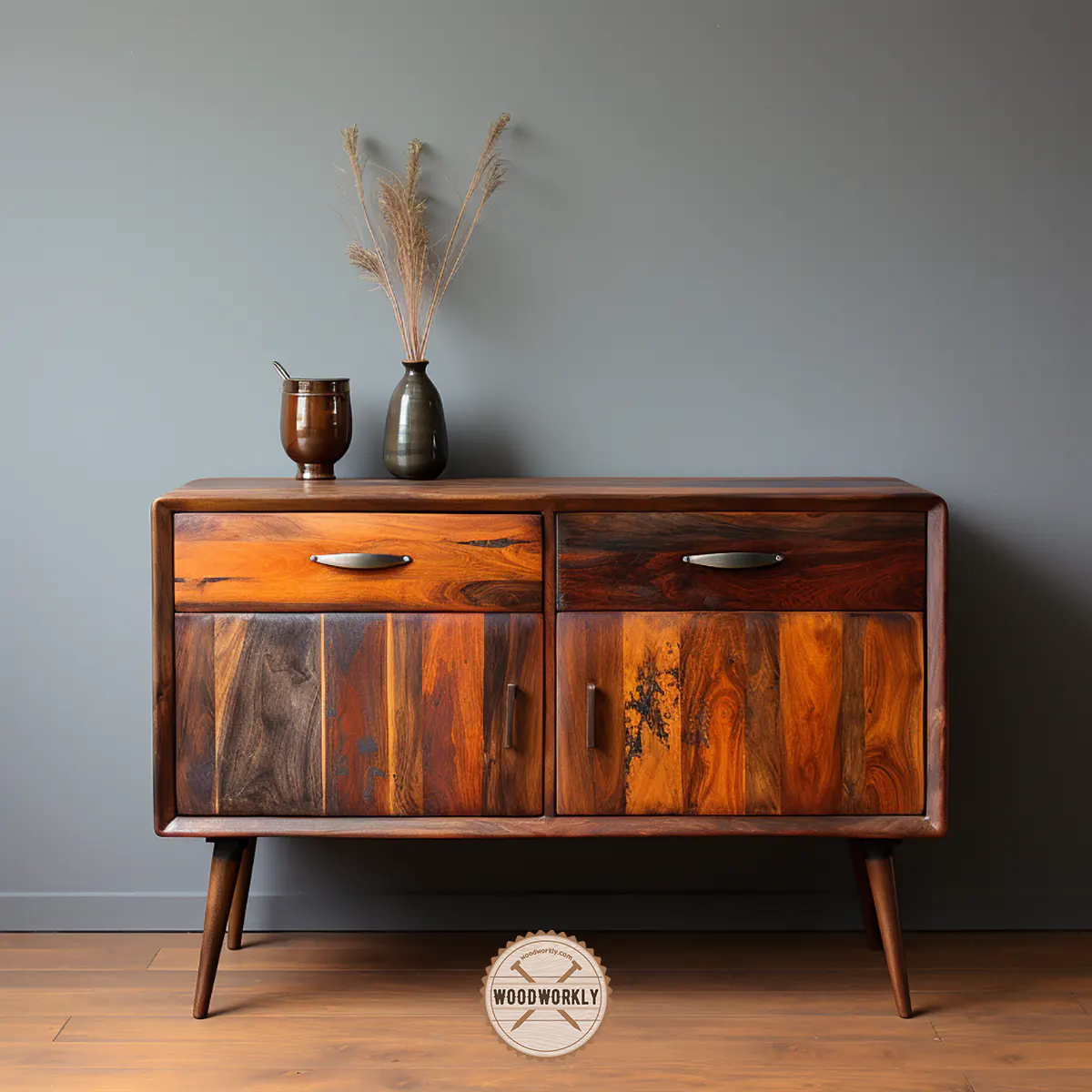
Is Acacia Wood Harder Than Oak?
Acacia wood is so much harder than Oakwood. According to the Janka hardness test, it shows higher values than Oak in terms of hardness.
| Wood Type | Hardness |
| Acacia wood | 2,300 lb. |
| Red Oak | 1,290 lb. |
| White Oak | 1,360 lb. |
If you’re looking for wood somewhat stronger, harder, denser than Oakwood, Acacia wood is one of the best you can easily go with.
Hevea vs Acacia Hardness
On the Janka hardness scale, hevea scores around 990, which is considered moderately hard. This is less than acacia, making it easier to work with, especially for intricate designs or detailed carving.
This, however, also means it may be more susceptible to scratches and dents than harder woods.
White both acacia and hevea are popular choices for woodwork, the difference in their hardness can make one more suitable than the other depending on the project.
Acacia, being the harder wood, is more resilient but requires more effort to work with.
On the other hand, hevea, while softer, offers more workability and is a more cost-effective choice for intricate projects.
Is Acacia Wood Harder Than Maple?
Acacia wood is harder than both hard Maple and Soft Maple. According to the Janka hardness test, it shows higher values than Maple in terms of hardness.
| Wood Type | Hardness |
| Acacia wood | 2,300 lb. |
| Hard Maple | 1,450 lb. |
| Soft Maple | 950 lb. |
In conclusion, Acacia wood is harder than many popular types of wood. It is
- 23% harder than Hickory
- 55% harder than White Oak
- 90% harder than softwoods
These values can be changed due to the quality and age of the wood. However, Acacia wood is a clear winner in terms of its hardness.
That’s it, folks! now you know how hard is acacia wood compared to many other types of wood.
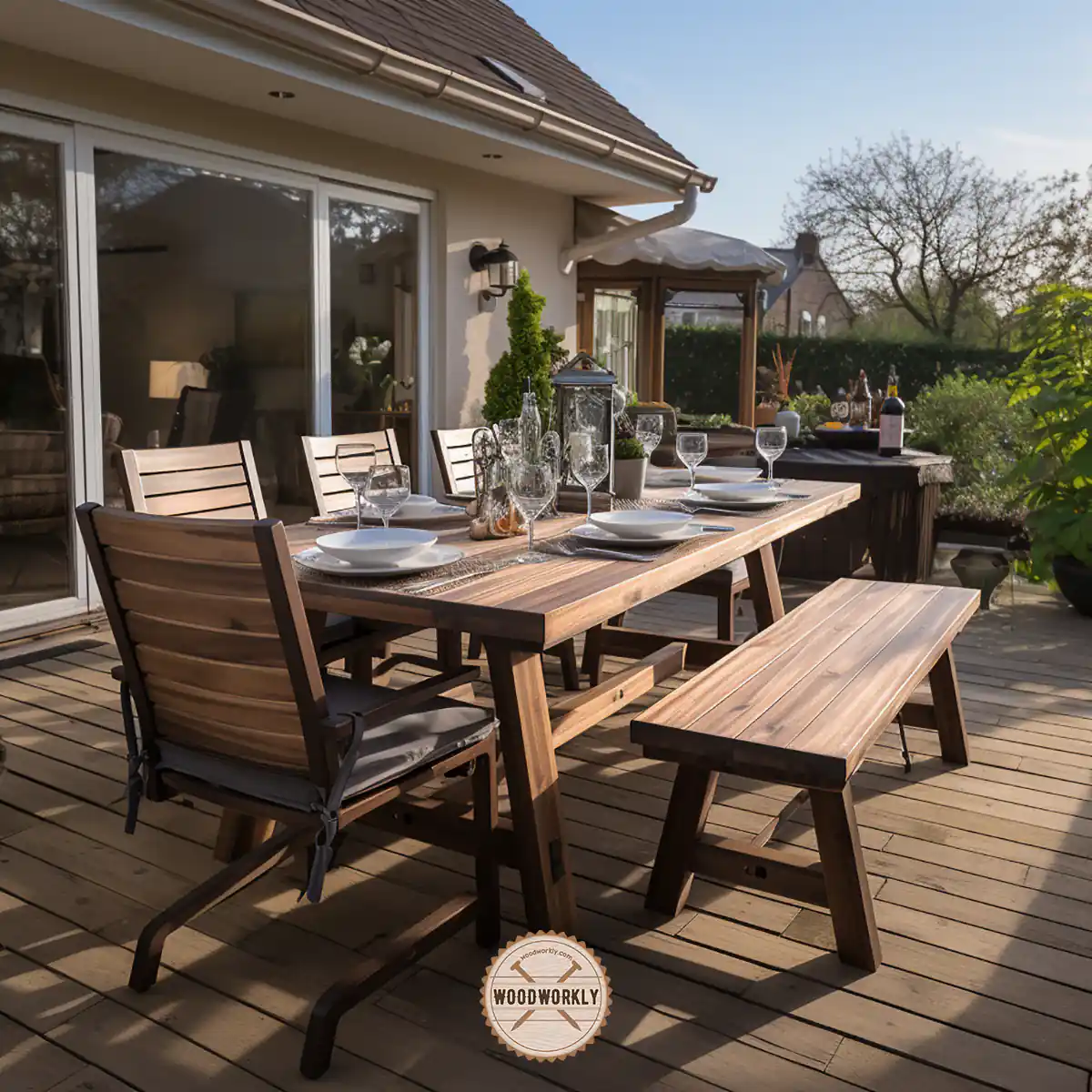
So, let’s answer some frequently asked questions.
FAQs
Is acacia wood hard or soft?
Acacia wood is generally considered a hardwood, with a Janka hardness rating between 1170 and 2345, which places it within the range of many other hardwoods.
What factors determine the hardness of acacia wood?
Several factors contribute to acacia’s hardness, including the specific species of acacia, its age, the climate and soil where it grew, and the season when it was cut.
How does the density of acacia wood affect its hardness?
Acacia’s hardness depends on its density, which can vary based on species, age, and growing conditions. Generally, denser acacia wood is harder.
Does acacia wood become less hard over time?
Yes, like any wood, acacia undergoes a process called “weathering”, in which water seeps into the pores and breaks down the cellulose molecules, potentially making the wood softer over time.
Is acacia wood durable?
Yes, Acacia wood is known for its durability, making it an excellent choice for high-quality furniture and other decor pieces.
Does acacia wood’s hardness make it difficult to work with?
While acacia’s hardness provides durability, it can also make the wood more challenging to work with, particularly for detailed carving or intricate woodworking projects.
Did I cover all you wanted to know about: How Hard Is Acacia Wood?
In this article, I have deeply described how hard is Acacia wood with its characteristics, uses many other factors.
Acacia wood has a hardness of 2300 lbf (10230 N). Acacia wood is harder than many hardwoods such as Oak, Hickory, Maple, Beech, and many more. It is incredibly strong and durable. Because of being hard, Acacia wood is resistant to dents, scratches, and fungus attacks. Acacia wood is one of the best and hardwood for any woodworking project.
As an experienced woodworker, I highly recommend Acacia wood for any kind of woodworking project because of its great hardness, strength, and durability.
But make sure to apply proper finishing before use.
Furthermore, I’ve talked about Acacia wood flooring with its pros and cons and finally, I have answered frequently asked questions regarding the topic, how hard is Acacia wood when compared to other popular wood types.
So, let’s start your next big woodworking project with Acacia wood with the help of this article. Have fun!